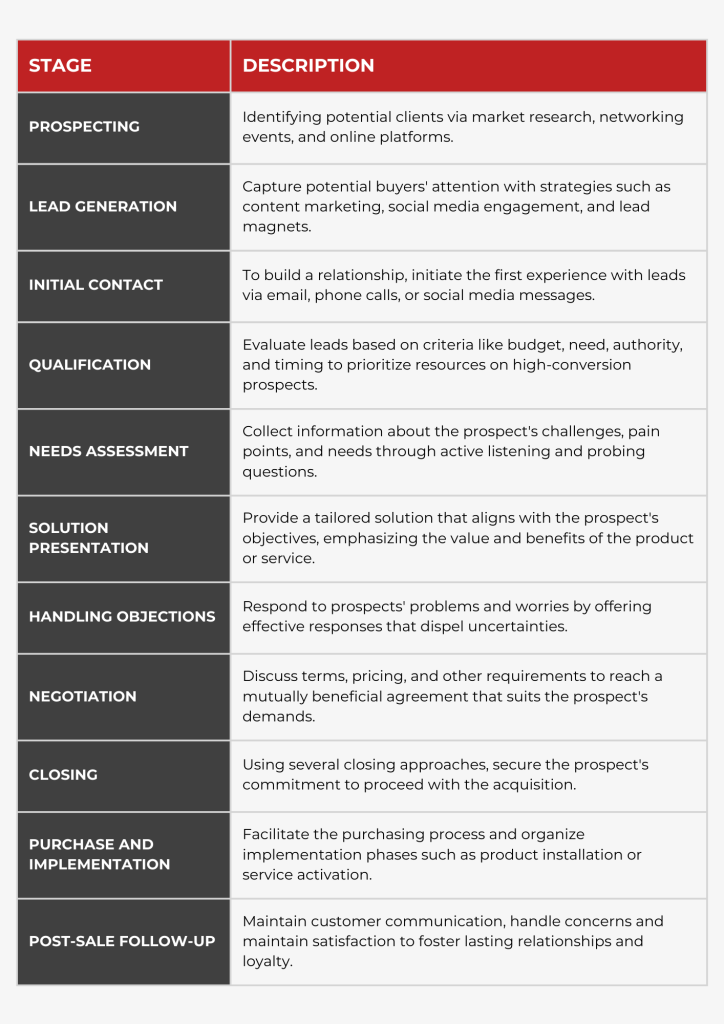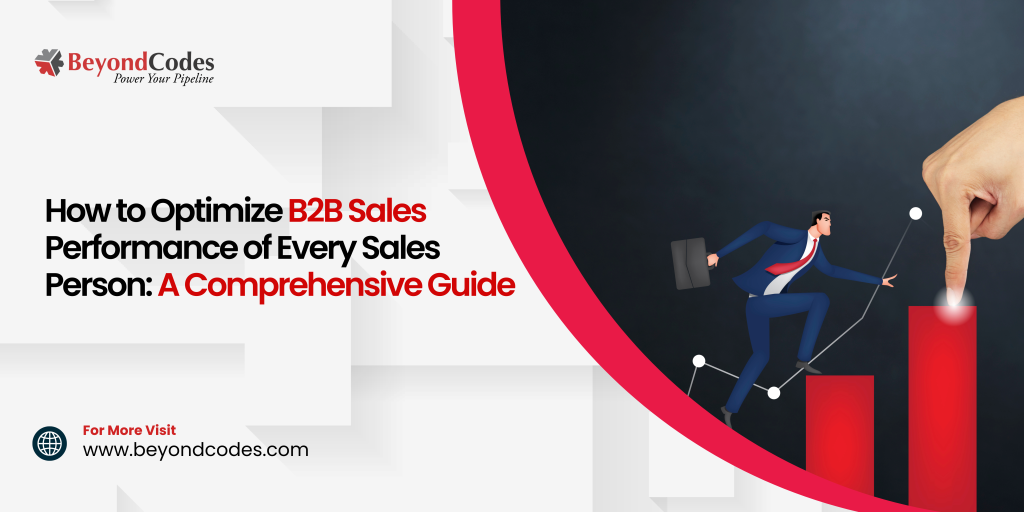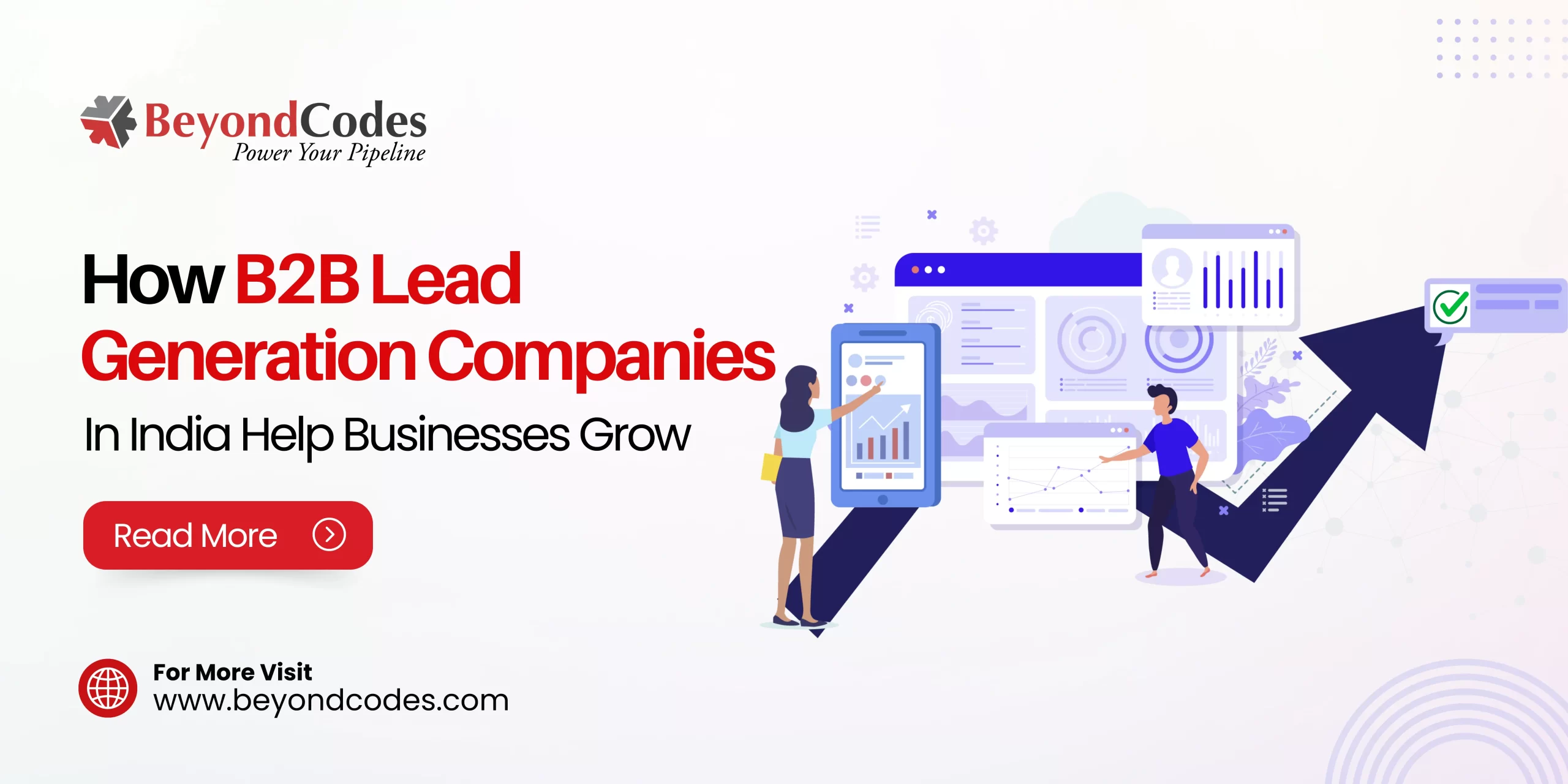A salesperson is essential in B2B sales, as businesses aim to outperform their competition. A high-performing B2B salesperson can make or break a company’s success. Understanding the average sales cycle is a crucial first step for every salesperson looking to increase revenue for their business.
Why? Because it enables businesses to identify new customers, develop relationships with them, and, eventually, close more deals. Prospecting, lead generation, closing deals, and post-sale follow-up are all part of the sales cycle.
Whether you’re a seasoned sales professional or a newbie, you must thoroughly understand the sales cycle to achieve more success and increase revenue for your company. Here’s what we’ll discuss in this complete guide—
What is the Sales Cycle? An Overview
The sales cycle refers to the sales process or stages a potential customer goes through- from the initial point of contact with a business to the final decision to acquire a product or service. It shows the whole journey of a prospect, from becoming aware of a solution that helps in buying decisions.
The sales cycle is a structured process that salespeople use to guide prospects through each stage of the sales process, eventually converting them into paying customers. The length and complexity of the sales cycle can vary based on the industry, the type of product or service being sold, and the nature of the buyer’s decision-making process.
The Key Stages of the Sales Cycle
To move a prospect from initial interest to a valued customer, you must thoroughly understand the sales cycle stages. Let’s go—

Quick Plug: Beyond Codes generates high-quality B2B leads and sets appointments for businesses, allowing them to build meaningful relationships with their potential clients. Contact us to discover more about our expertise.
Ways Every Salesperson Can Follow to Optimize B2B Sales
Optimizing B2B sales entails various methods and strategies that focus on understanding and meeting the demands of your business clients. Here are some strategies that any salesperson can use to improve B2B sales:
1. Understanding the B2B Sales Environment
Before getting into specific techniques, it’s critical to understand the variations of B2B sales. B2B transactions, unlike B2C sales, include complex decision-making processes, lengthier sales cycles, and various stakeholders. The skill of a salesperson to traverse this landscape is critical.
2. Using Data-Driven Insights
Data analytics helps businesses drive more B2B sales. Use data analytics tools to learn about customer behavior, preferences, and pain concerns. Understanding your target audience allows you to adjust your strategy and messaging to clients’ needs, enhancing your chances of success.
3. Building Strong Value Propositions
Your ability to stand out from the competition depends on your value offer. It clearly explains how your product or service solves certain problems for the client’s business and provides measurable advantages. Customize your value proposition for each prospect, showing a thorough knowledge of their industry and challenges.
4. Building Relationships and Trust
Successful business-to-business interactions are built on trust. Put your efforts towards creating lasting, sincere relationships with your prospects. Engage yourself in listening to others, showing empathy, and presenting yourself as a knowledgeable resource. Connecting with other professionals through networking and attending professional events can also be beneficial.
5. Time Management Skills
Time is a valuable resource that salespeople and customers value equally. Set priorities for your work and use your time wisely. Leads should be carefully qualified to focus on prospects with the highest potential. To improve your workflow, embrace productivity tools and time management strategies.
6. Continuous Learning
The B2B sales market is constantly evolving. Businesses must stay updated with emerging technology, market trends, and competitor offerings. Having said that, you need to regularly update your knowledge of market trends, products or services, and sales strategies. Participate in training events, webinars, and workshops to improve your skills.
7. Using Automation and Technology
Use technology to make your sales process more efficient. With CRM systems, sales enablement platforms, and automation technologies, you can manage prospects, keep track of interactions, and nurture relationships more effectively. Thanks to automation, your time can be freed up for higher-value activities like individualized outreach.
Also Read: B2B Lead Nurturing: The Ultimate Guide to Expand Your Business
8. Presentation and Communication Skills
To grasp your clients’ challenges and company goals, actively listen to them. Consider your audience’s preferences when developing communications or sales pitches and meet their needs. Deliver engaging presentations that emphasize the benefits that your solution offers. Your storytelling should include success stories and results.
9. Overcoming challenges
Be proactive in anticipating and addressing challenges. Create sales techniques to address common problems and concerns that clients might voice. By illustrating how your solution can address their specific issues, you can turn challenges into chances for future interaction.
10. Setting and Measuring KPIs
Develop precise, quantifiable KPIs to monitor your success. KPIs include metrics on client satisfaction, sales cycle time, deal size, and conversion rates. Assess your performance regularly against these KPIs and modify your plans as necessary.
11. Cross-Functional Team Collaboration
Collaboration between various teams, including marketing, customer support, and product development, is common in B2B sales. Build strong relationships with these teams to give your clients a seamless experience. Sharing information and communicating effectively can provide more successful results.
Essential Metrics to Measure for Every Salesperson
Whether you are a sales team manager or a lone sales professional, tracking the appropriate metrics is crucial for analyzing performance, spotting potential improvement areas, and ultimately generating revenue growth. Consider these crucial parameters, which every salesperson needs to track to maximize performance and produce remarkable results:
A). Lead Generation Metrics
Lead generation is an art that effective salespeople excel at. Thus, monitoring metrics like the number of leads produced, the conversion rate from leads to qualified prospects, and the sources of these leads is critical. These insights demonstrate a salesperson’s ability to recognize promising clients and start fruitful interactions.
B). Conversion Rate
The sales conversion rate measures a lead’s or prospect’s likelihood of becoming a customer. It’s an essential metric for determining how successfully a salesman converts potential customers into paying ones. High conversion rates indicate successful B2B lead nurturing, convincing communication, and an in-depth understanding of customer needs.
C). Sales Pipeline Management
Consistent success is built on a well-managed sales funnel. Metrics like average deal size, engagement value in the pipeline, and sales cycle time give a thorough picture of how effectively a salesperson moves leads through different phases, exposing potential bottlenecks and openings for improvement.
D). Win Rate
The percentage of opportunities that lead to profitable sales is known as the win rate. This metric demonstrates a salesperson’s ability to recognize and rank promising customers, personalize their approach, and successfully handle obstacles. A high win rate suggests a strong sales plan and excellent sales abilities.
E). Average Deal Size
This metric determines the average deal value. Salespeople can better target high-value prospects, spot patterns in customer preferences, and coordinate their efforts with the company’s revenue targets by monitoring the average deal size.
F). Churn Rate
The churn rate measures the percentage of customers who stop doing business with you over a certain period. Even though salespeople are often connected to a customer’s success, they play a critical role in retaining these customers. Gaining insight into why customers leave can help to enhance the sales process and customer experience.
G). Activity Metrics
In activity analytics, a salesperson’s actions, such as calls, emails, appointment settings, and proposals submitted, are included. These metrics shed light on a salesperson’s work ethic, commitment, and general level of involvement in the sales process. Activity metrics provide a snapshot of effort and consistency, even though they don’t provide an overview.
Final Thoughts
A salesperson’s performance isn’t only evaluated by how many sales they make; it’s also determined by how many actionable insights they generate. By using the abovementioned sales cycle, ways, and metrics, sales professionals can modify their plans, react to changes in the market, and continuously generate income.
Sales reps at Beyond Codes can take your company’s sales performance to the next level with their expertise in B2B lead generation and appointment setting services. Contact us to learn more about how we can help you accomplish your goals.
The List of Articles that You Can Read:
- How to Leverage ChatGPT for B2B Sales Process
- B2B Prospecting: What You Need to Know to Grow Your Business
- 5 Techniques of Lead Nurturing to Unlock the B2b Sales Success
- Mastering Sales As A Service: A Comprehensive Guide For Success
- Accelerate Deal Closures: 20 Highly Effective B2B Lead Generation Sales Strategies







